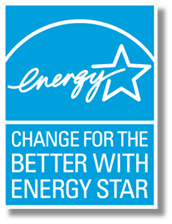 Help from ENERGY STAR...
Help from ENERGY STAR... Keep Some Money in Your Wallet This Winter
According to the U.S. Department of Energy, the average American family spends $1,900 a year on energy bills, much of which goes to heating and cooling homes. Consumers can save as much as 20 percent annually on total energy costs – and reduce their environmental impact – by following four simple recommendations from the government's ENERGY STAR® program.
These four steps will help you “H.E.A.T” smartly while reducing home energy consumption and environmental impact this winter:
- Home Sealing. Seal air leaks and add insulation – paying special attention to your attic and basement, where the biggest gaps and cracks are often found. This will keep warm air inside where it belongs and help your equipment perform more efficiently.
- Equipment Maintenance. Dirt and neglect are the number one causes of system failure. Get a check-up of your heating system to make sure it's performing efficiently and safely. Clean or replace your system's air filter to help lower energy bills and maintain better indoor air quality.
- Ask for ENERGY STAR®. Look for the ENERGY STAR® label when purchasing products. If just one in 10 households bought ENERGY STAR® qualified heating and cooling products, the change would keep 18 billion pounds of greenhouse gas emissions out of our air.
- Thermostat Use. Install a programmable thermostat to save energy during times when you're home or away. When properly used, a programmable thermostat can save as much as $150 a year in energy costs.

The ENERGY STAR® web site has other ideas to improve your home's energy efficiency.
Businesses and organizations are also encouraged to look at five commonly overlooked areas to save energy that are listed at the ENERGY STAR® web site. Businesses with manufacturing facilities have other energy saving options.